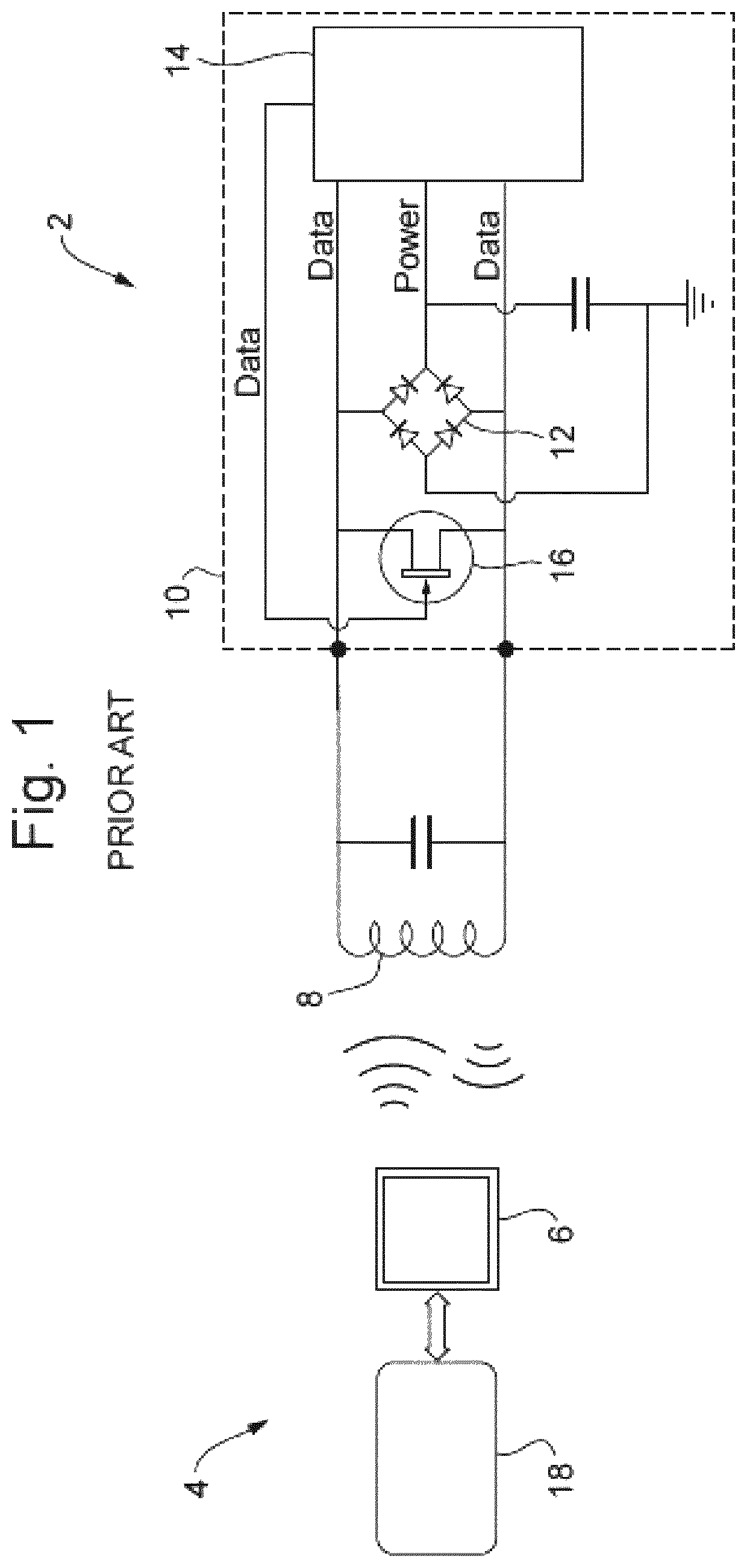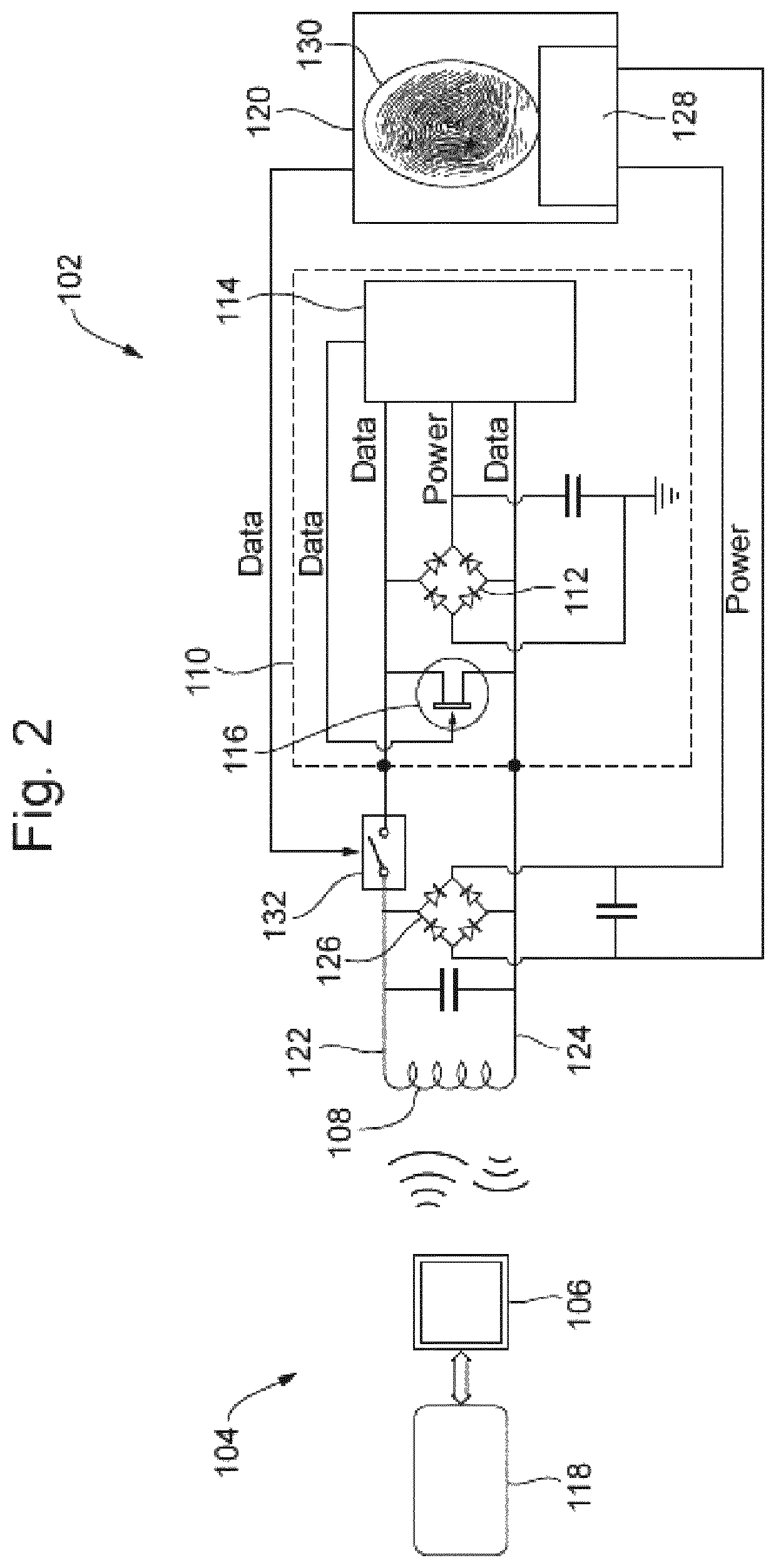Biometric device
a biometric and smartcard technology, applied in the field of smartcards, can solve the problems of damage to the fingerprint compared to the fingerprint previously recorded, and achieve the effect of improving the utility of such biometric smartcards
- Summary
- Abstract
- Description
- Claims
- Application Information
AI Technical Summary
Benefits of technology
Problems solved by technology
Method used
Image
Examples
Embodiment Construction
[0054]FIG. 1 shows the architecture of a typical passive smartcard 2. A powered card reader 4 transmits a signal via an antenna 6. The signal is typically 13.56 MHz for MIFARE® and DESFire® systems, manufactured by NXP Semiconductors, but may be 125 kHz for lower frequency PROX® products, manufactured by HID Global Corp. This signal is received by an antenna 8 of the smartcard 2, comprising a tuned coil and capacitor, and then passed to a communication chip 10. The received signal is rectified by a bridge rectifier 12, and the DC output of the rectifier 12 is provided to processing unit 14 that controls the messaging from the communication chip 10.
[0055]A control signal output from the processing unit 14 controls a field effect transistor 16 that is connected across the antenna 8. By switching on and off the transistor 16, a signal can be transmitted by the smartcard 2 and decoded by suitable control circuits 18 in the reader 4. This type of signalling is known as backscatter modula...
PUM
 Login to View More
Login to View More Abstract
Description
Claims
Application Information
 Login to View More
Login to View More - R&D
- Intellectual Property
- Life Sciences
- Materials
- Tech Scout
- Unparalleled Data Quality
- Higher Quality Content
- 60% Fewer Hallucinations
Browse by: Latest US Patents, China's latest patents, Technical Efficacy Thesaurus, Application Domain, Technology Topic, Popular Technical Reports.
© 2025 PatSnap. All rights reserved.Legal|Privacy policy|Modern Slavery Act Transparency Statement|Sitemap|About US| Contact US: help@patsnap.com



